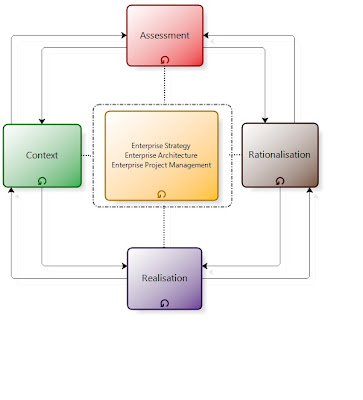Realising the Australian Government Cloud Strategy: The Gill Framework

Abstract Australian Government Cloud Computing Strategy Direction paper discusses the whole-of-a-government approach to cloud computing adoption and provides the following vision statement. “Agencies may choose cloud-based services where they demonstrate value for money and adequate security”. This article discuses how to put this vision into practice by using The Gill Framework for Adaptive Enterprise Service System Architecture. Introduction The Gill Framework (Gill 2012) provides an adaptive enterprise service system architecture driven approach that can be used to define, operate, manage, support and adapt the Government or G-Cloud environment (see Figure 1). Figure 1: The Gill Framework Version 1.0 (Gill 2012) The Gill Framework has two main layers: inner layer and outer layer. Inner Layers: Enterprise Architecture (Adaptive Enterprise Service System) The inner layer of The Gill Framework presents a whole-of-a-government as a living system...


